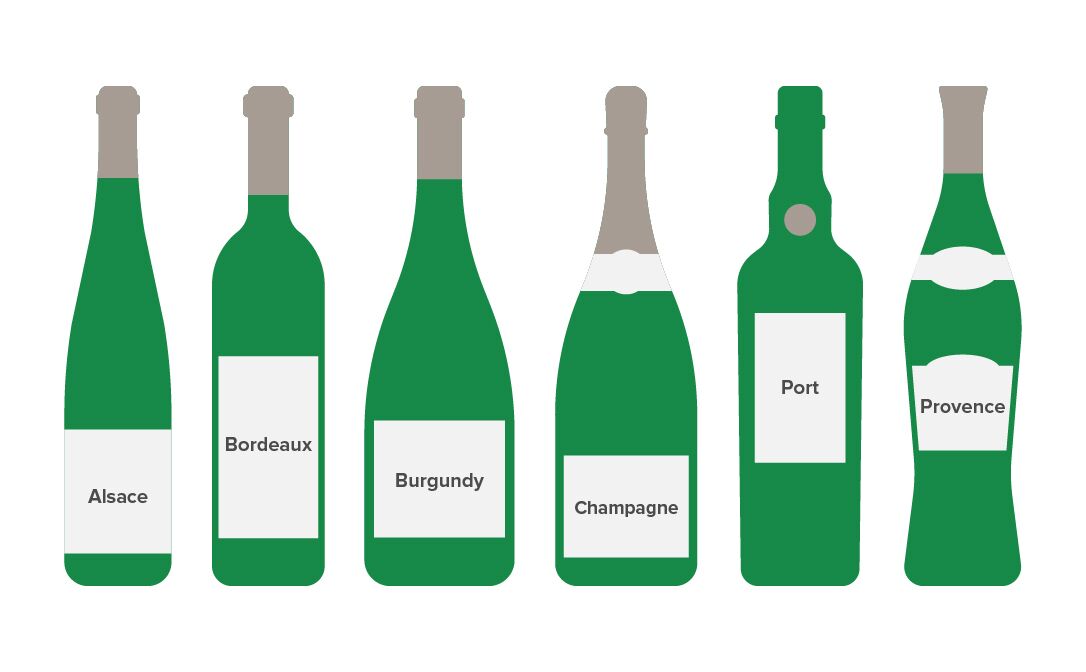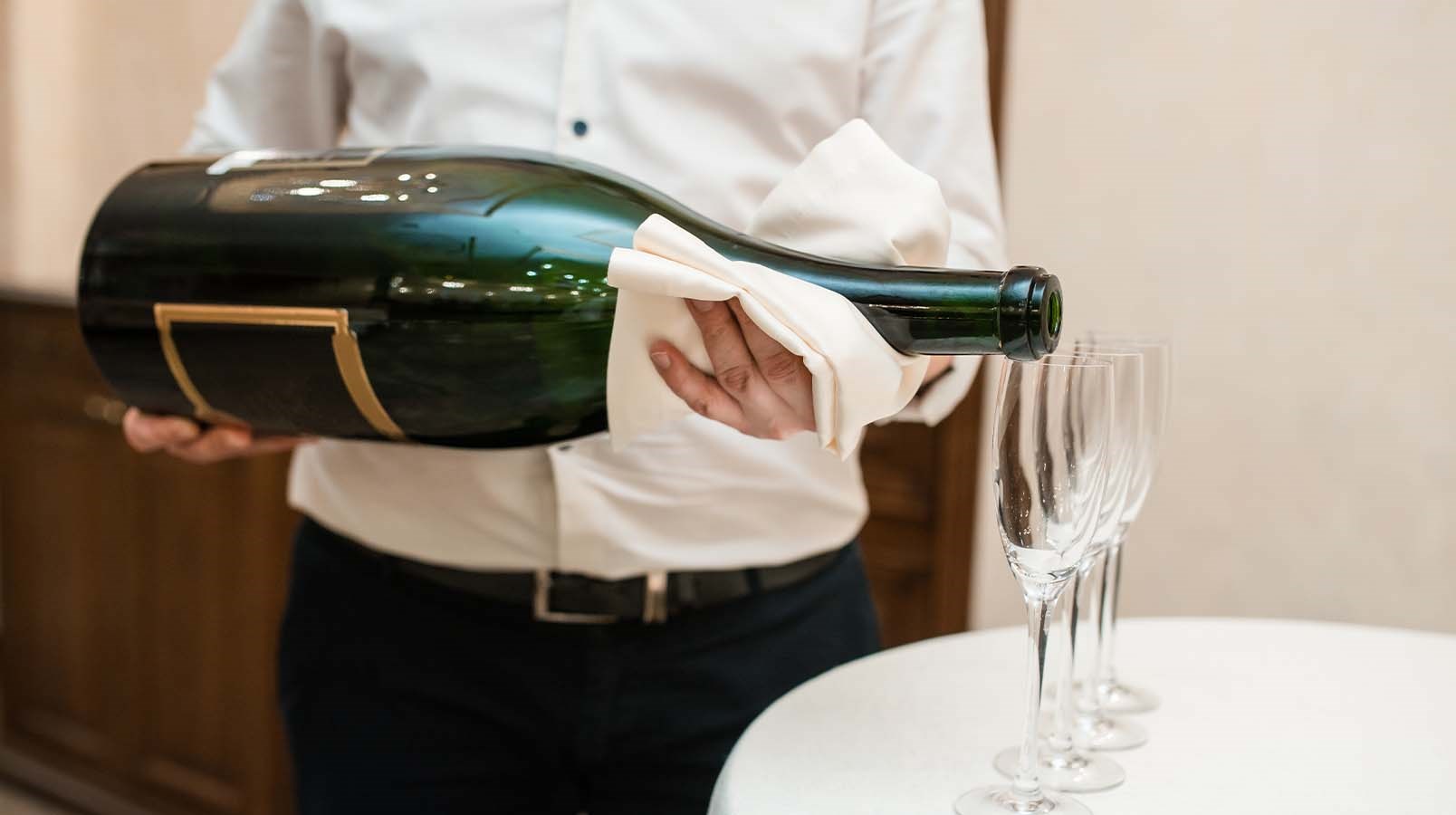While there are thousands of grape varieties and dozens of wine glass styles to suit different types of wine, there are only a few standard wine bottle shapes and sizes.
Here we break down the differences and why, if at all, they matter?
In short, different bottle sizes don’t mean better wine quality, although smaller bottles are believed to hasten the ageing process.
If you're keen to look "behind the label", with the Level 2 Award in Wines, you'll gain an understanding of the factors that influence the style and quality of the wines you love and discover new styles and regions. Click here to discover more.
What are the different wine bottle sizes and names?
There are twelve sizes of wine bottle, ranging from 18.7 cl (187 ml) to 18 litres - although EU legislation currently sets a cap at 10 litres for still wine and 9 litres for sparkling wine.
Bottles up to 3 litres are simply named after their sizes, while larger bottles derive their names from biblical figures. The origin of this convention is uncertain.
18.7 cl (187.5ml) Piccolo or Split: a bottle commonly used for single serves in convenience, travel and hospitality sectors
37.5 cl (375 ml) Demi or Half: equivalent to a half a standard wine bottle
75 cl (750 ml) Standard wine bottle: the bottle that you will most commonly find on the shelves of your local wine retailer
1.5 litres Magnum: holds the equivalent of two standard wine bottles
3 litres Double Magnum: equals the capacity of four standard wine bottles
4.5 litres Jéroboam: holds six standard bottles of still wine. For sparkling wine a Jéroboam usually has the capacity of a Double Magnum and a 4.5-litre bottle for champagne and sparkling wine is called Rehoboam.
6 litres Impériale: contains eight standard bottles of still wine. Its equivalent in sparkling wine is called Methuselah
9 litres Salmanazar: equivalent to 12 standard bottles
12 litres Balthazar: equivalent to 16 standard bottles
15 litres Nebuchadnezzar: equivalent to 20 standard bottles
18 litres Solomon: equivalent to 24 standard bottles
What are the standard wine bottle shapes?
Different types of wine bottles are the result of various traditional glassblowing methods across regions, rather than winemakers’ attempts at enhancing the quality of wine. As with sizes, the shape of wine bottles is more or less standardised across the world. Most wines you find on the shop shelves will be packaged into five standard shapes. They are named after the wine regions where they were originally developed and used to store the flagship wine of these regions.
Knowing the basic shapes can be a useful clue to identifying the style of wine before even reading the label.
Alsace bottle
Also known as a Germanic bottle, this bottle is taller and thinner than other types, with gently sloping shoulders. The main grape contained in Alsace bottles is Riesling. Bottles holding French Riesling are often brown, while the ones used for German Riesling are more often green.
Bordeaux bottle
This is probably the most common bottle you will come across. The body of a Bordeaux bottle has a cylindric shape, with straight sides and high shoulders (the link between the body of a bottle and a bottleneck). The most popular style of wine in Bordeaux are Cabernet Sauvignon/ Merlot blends, but you will find most wines sold in this type of bottle.
Burgundy bottle
The Burgundy bottle is most often used for Chardonnay and quite often Sauvignon Blanc and Pinot Noir. It has a longer neck than the Bordeaux bottle and distinctive sloping shoulders, making it resemble a cone.
Champagne bottle
The bottles for Champagne and other sparkling wines like Cava or Prosecco might resemble a Burgundy bottle, but are heavier and thicker. This is because they have to resist the high pressure resulting from the production of sparkling wines.
Port bottle
The main bottle in which you will find Port, Sherry, Madeira and other fortified wines. This resembles a Bordeaux bottle, but with a key difference. The neck of a Port bottle has a bulb to trap excess sediment during pouring.
Provence bottle
The shape somewhat resembles a bowling pin, an hourglass or even a corset. As the name suggests, this bottle comes from Côtes de Provence, the famous rosé-producing region. With the current trend for rosé wines, you’re very likely to spot this shape of bottle when shopping for wine.

Why do wine bottles have a concave bottom?
You may have wondered about the purpose of the indentation at the bottom of a wine bottle. This depression is known as a punt or a kick-up. Punts don’t contribute to the quality of wine but they often come in handy during wine production and service.
Punts for Champagne and sparkling wines are deeper because they strengthen the glass that needs to withstand high pressure. A deep punt also makes it easier for a bottle to be lifted by suction during sparkling winemaking. With a deep punt, you can also support the bottle more easily with your thumb when pouring.
A punt adds to the cost of a bottle. It is cheaper to produce a bottle without the punt, as it requires less glass. However, a punt is no indicator of the quality of the wine, but rather the winemaker's visual preference.
Next time you’re at your local wine retailer, see which shapes and styles you can identify.
Want to learn more about wine packaging? Read our useful guide to reading wine labels, and find out about how wine labels are designed.
This article was originally published on 13th June 2019.
Related content:



